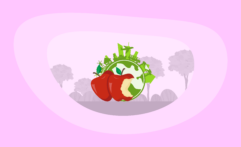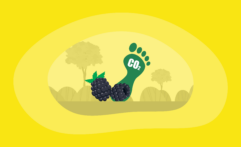The Environmental Impact of Pineapples: From Farm to Table
Impactful Ninja is reader-supported. When you buy through links on our site, we may earn an affiliate commission.
Learn more
Learn more
.
Hey fellow impactful ninja ? You may have noticed that Impactful Ninja is all about providing helpful information to make a positive impact on the world and society. And that we love to link back to where we found all the information for each of our posts. Most of these links are informational-based for you to check out their primary sources with one click. But some of these links are so-called "affiliate links" to products that we recommend. First and foremost, because we believe that they add value to you. For example, when we wrote a post about the environmental impact of long showers, we came across an EPA recommendation to use WaterSense showerheads. So we linked to where you can find them. Or, for many of our posts, we also link to our favorite books on that topic so that you can get a much more holistic overview than one single blog post could provide. And when there is an affiliate program for these products, we sign up for it. For example, as Amazon Associates, we earn from qualifying purchases. First, and most importantly, we still only recommend products that we believe add value for you. When you buy something through one of our affiliate links, we may earn a small commission - but at no additional costs to you. And when you buy something through a link that is not an affiliate link, we won’t receive any commission but we’ll still be happy to have helped you. When we find products that we believe add value to you and the seller has an affiliate program, we sign up for it. When you buy something through one of our affiliate links, we may earn a small commission (at no extra costs to you). And at this point in time, all money is reinvested in sharing the most helpful content with you. This includes all operating costs for running this site and the content creation itself. You may have noticed by the way Impactful Ninja is operated that money is not the driving factor behind it. It is a passion project of mine and I love to share helpful information with you to make a positive impact on the world and society. However, it's a project in that I invest a lot of time and also quite some money. Eventually, my dream is to one day turn this passion project into my full-time job and provide even more helpful information. But that's still a long time to go. Stay impactful,Affiliate Disclosure
Why do we add these product links?
What do these affiliate links mean for you?
What do these affiliate links mean for us?
What does this mean for me personally?
![]()
Pineapples are a booming industry, with 30 million tons produced every single year. They’re nutritious too, as a cancer-fighting fruit loaded with antioxidants and Vitamin C. Furthermore, this fruit has been a historical symbol of hospitality and welcome, especially in South America. But there are also plenty of ways that the pineapple industry can harm the environment. So we had to ask: What is the environmental impact of pineapples?
Pineapples have a minimally negative environmental impact. The main factors that cause environmental damage are plastic packaging, high pesticide rates, use of nitrogen fertilizer, monoculture farming, and low composting statistics.
In this article, we will examine the environmental impact of pineapples from several different angles. We will go through the life-cycle of pineapples, detailing their impact on the environment from growth to distribution to your plate to waste management. We will then compare the environmental impact of pineapples to that of other fruits. And, finally, we’ll share some tips with you on how you can reduce your own environmental impact and offset your own carbon emissions – both for your personal life and pineapple-related.
Here’s How We Assessed the Environmental Impact of Pineapples
The Environmental Impact Assessment (EIA) is one of the ways we measure the potential environmental effects of our actions, like the consumption of pineapples. It is a holistic assessment based on the environmental changes associated with our consumption. Those are changes in our environment that can have adverse effects on the air, land, water, fish, and wildlife or the inhabitants of the ecosystem.
“Environmental Impact: the effect that the activities of people and businesses have on the environment”
Cambridge Dictionary
Basically, all goods and services you buy – including pineapples – leave an impact on our environment. When it comes to food in general, and pineapples in specific, the following are key factors:
- Land requirements: Large parts of the world that were once covered by forests and wildlands are now used for agriculture. 10 million hectares of forest are destroyed annually and 50% of the world’s habitable land is now used for agriculture. This loss of natural habitat has been the main driver for reducing the world’s biodiversity.
- Water footprint: 70% of global freshwater is now used for agricultural purposes. By assessing the water footprint of a particular food, we can determine how our limited freshwater resources are being consumed and polluted.
- Pesticide and fertilizer usage: Pesticides and fertilizers provide a range of agricultural benefits. However, numerous studies link pesticides and fertilizers to serious effects on human health, along with disruptions to vital ecosystems and the spread of aquatic dead zones.
- Carbon footprint: The carbon footprint is one of the ways we measure the effects of our human-induced global climate change. Today, food production accounts for over a quarter (26%) of global greenhouse gas emissions.
- Waste generation: Food and its packaging account for almost 45% of the materials landfilled in the US alone. And packaging sent to landfills, especially when made from plastics, does not degrade quickly or, in some cases, at all.
To understand the overall environmental impact of pineapples, we must assess each of their key factors. This Environmental Impact Assessment (EIA) is a tool originally developed to identify the environmental impacts of a project prior to decision-making and also helps us to evaluate the environmental impacts of pineapples, from farm to table.
Here’s the Overall Environmental Impact of Pineapples
The overall environmental impact of pineapples is minimally negative. Contributing factors include their high agrochemical use, monoculture farming, use of plastic packaging, and low composting rates.
Pineapples do a lot of things right when it comes to their environmental impact. They have dense farming practices, a low carbon footprint, and don’t require significant irrigation. However, they can still cause a lot of environmental damage in a lot of ways.
So, let’s have a look at the environmental impact of each key factor of pineapples!
| Key Assessment Factors | Environmental Impact |
| Land requirements for pineapples | Pineapples’ land requirements are very low. But, they use monoculture growth techniques which significantly worsens their effect on the environment. |
| Water footprint of pineapples | Pineapples have a moderate water footprint of 50 inches per year. However, their pesticide usage means that excess water is needed to clean up harmful residue. |
| Agrochemical usage for pineapples | Pineapples use a significant amount of harmful pesticides and fertilizers. Therefore, their environmental impact is very negative at this stage. |
| Carbon footprint of pineapples | Pineapples have a very low carbon footprint of 0.09 kg (0.20 lb) of CO2e per pound of pineapples. Most of these emissions come from their high pesticide use, transportation emissions (e.g., to get them from Costa Rica to the US), and their low composting rates. |
| Waste generation of pineapples | Pineapples’ waste generation is high. This is mainly because they use plastic packaging and their organic waste isn’t often composted. |
These are the overall summaries, but there is a lot more to the story. In the next few sections, we will dive deeper into each stage to illustrate all the important aspects of pineapples’ environmental impact.
What Are the Land Requirements for Pineapples
Pineapples’ land requirements are very low. But, they use monoculture growth techniques which significantly worsen their effect on the environment.
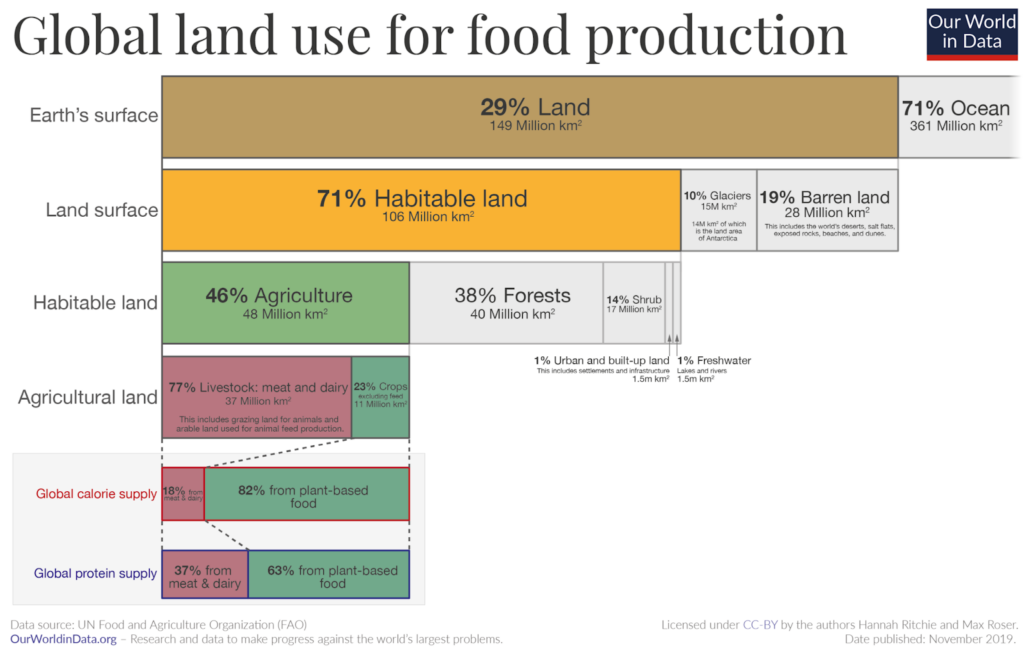
Growing pineapples has a lot of variables that contribute to their environmental impact. The amount of land they use, the way in which they grow, and the amount of time they take to grow will all contribute to their environmental impact.
How do the land requirements of pineapples impact their environmental footprint?
- What is the land usage of pineapples: Pineapples have an incredibly high yield of 70–100 tons per hectare. This is one of the densest yields amongst fruits. For example, many fruits such as strawberries and mangoes fall into the 5–25 tons per hectare range. The lower density of pineapples’ farming means that each individual pineapple needs less space to grow, therefore less natural land is used.
- Where and how are pineapples grown: Most pineapples are grown in Costa Rica. The country produces around 84% of the world’s pineapples. Pineapples grow as individual plants which have carbon-sequestering properties. This means they store carbon within the soil, reducing their carbon footprint. However, pineapples are also grown in monocultures. Monocultures are terrible for biodiversity as they limit pollination, soil microbes, and other wildlife.
- How does the pineapple industry affect the loss of habitable land: The monocultures within the pineapple farming industry mean that they have a devastating impact on the environment. In Costa Rica, the pineapple industry has increased rapidly, leading to more and more land being cleared.
- How does the pineapple industry affect wildlife and biodiversity: Monocultures wreak havoc on biodiversity. They are particularly damaging because they limit varied food sources for surrounding wildlife.
In short, pineapples don’t require too much land to grow. However, because they are grown in monocultures, they still have a negative impact on the environment.
What Is the Water Footprint of Pineapples
Pineapples have a moderate water footprint of 50 inches per year. However, their pesticide usage means that excess water is needed to clean up harmful residue.
Pineapples have a moderate water footprint. Water usage is one of the most important factors in the environmental impact of a fruit. The amount of water used, as well as the way they affect the water sources around them, are all major contributing factors. Here, we will look at these different angles of pineapples’ water impact.
How does the water footprint of pineapples impact their environmental footprint?
- What is the overall water usage of pineapples: Pineapples need about 50 inches of water per year, which is average compared to other fruits.
- What is the green water footprint of pineapples: The green water footprint is the amount of water from precipitation stored in the soil and used by plants for growth. Most pineapples consumed in the US come from Costa Rica, which gets around 100 inches of rain per year. This means that only about half of Costa Rica’s rain has to go towards pineapple farming. Their green water footprint is thus very low.
- What is the blue water footprint of pineapples: The blue water footprint is the amount of water sourced from surface (such as rivers or lakes) or groundwater resources. Pineapples need little to no irrigation because Costa Rica’s 100-inch-per-year rain measurement more than covers their 50-inch-per-year water requirement. Therefore, their blue water footprint is very low.
- What is the gray water footprint of pineapples: The gray water footprint is the amount of freshwater required to clean up water pollution to meet certain quality standards. Essentially, it’s the amount of water needed to make polluted water clean enough to be safe and healthy for humans and the environment. Pineapples use a very high amount of pesticides during their growth process. This means that there is a considerable amount of water needed to clear away their pesticide residue and so their gray water footprint is high.
- How does the pineapple industry affect freshwater and ocean pollution: Pineapples’ use of extensive pesticides, as well as nitrogen fertilizer, means that they cause significant damage to waterways and aquatic life.
In short, pineapples require a moderate amount of water and almost no irrigation. However, their high pesticide and harmful fertilizer rates mean that they require a significant amount of water to clear pesticide residues.
What Is the Agrochemical Usage for Pineapples
Pineapples use a significant amount of harmful pesticides and fertilizers. Therefore, their environmental impact is very negative at this stage.
Pesticides and fertilizers can have a significant impact on the environment. They both require resources to create as well as have effects on the life around them. Here, we will look at how pineapples’ pesticide and fertilizer rates affect their environmental impact.
How does the pesticide and fertilizer usage of pineapples impact their environmental footprint?
- What is the pesticide usage of pineapples: Pineapples use a very high amount of pesticides. Pesticides not only have adverse effects on groundwater, but they can also impact wildlife, insect populations, and soil microbes. This means that their environmental impact is very negative in terms of pesticide use.
- What is the fertilizer usage of pineapples: Pineapples use nitrogen fertilizer. Nitrogen has a very negative impact on the environment, causing major pollution. The environmental impact of pineapples is thus very negative in this category.
- Are there any known issues connected to the agrochemical usage for pineapples: Nitrogen fertilizers are very bad for the environment. They can cause air pollution, which affects the breathing of humans and animals alike. They can also easily run into waterways, which is devastating to marine life, plus they pollute the soil, potentially affecting native plant life.
In short, pineapples’ use of both excessive pesticides and harmful nitrogen fertilizers means that they have a very negative agrochemical environmental impact.
What Is the Carbon Footprint of Pineapples
Pineapples have a very low carbon footprint of 0.09 kg (0.20 lb) of CO2e per pound of pineapples. Most of these emissions come from their high pesticide use, transportation emissions (e.g., to get them from Costa Rica to the US), and their low composting rates.
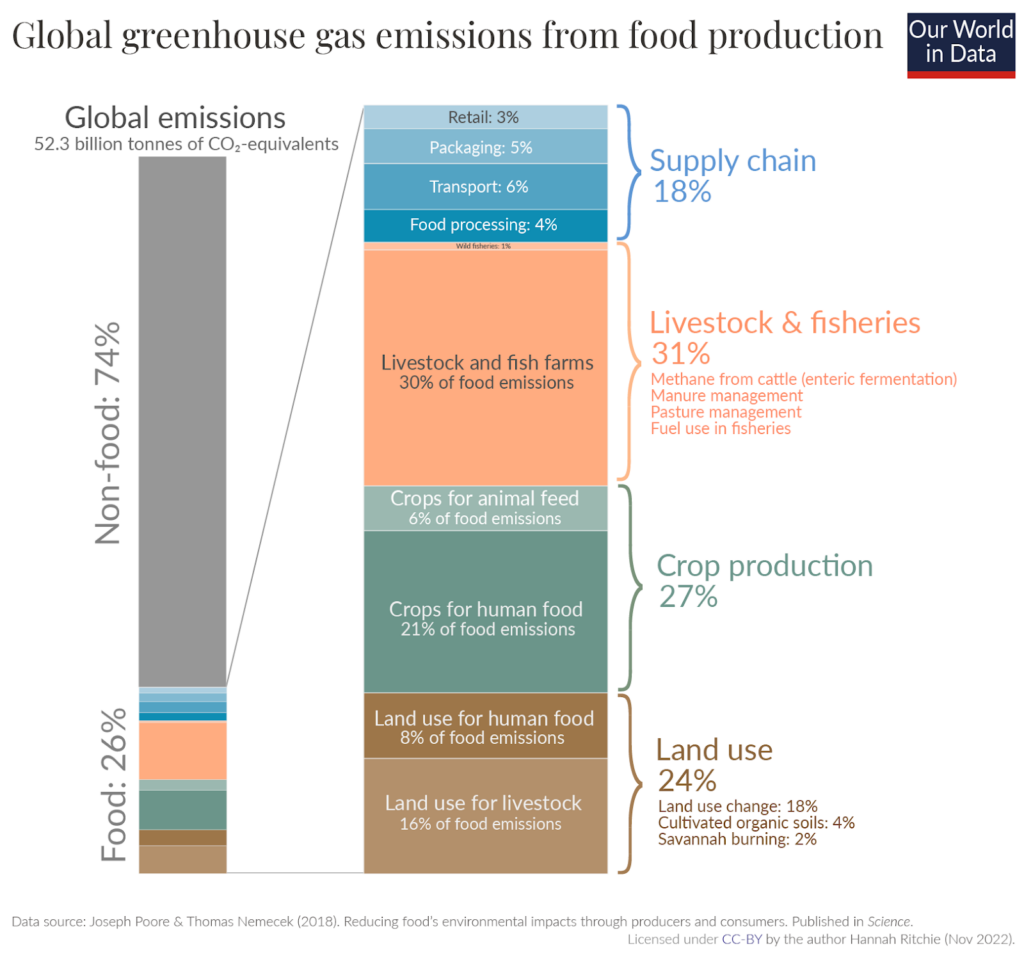
Carbon footprint is one aspect of the overall environmental impact of a fruit. It essentially measures how much carbon or other greenhouse gasses the production of pineapples emits into the atmosphere. Emissions from product manufacturing, irrigation, transportation fuel, and landfills all add up to create the overall carbon footprint of a fruit. Let’s see how the carbon footprint of pineapples breaks down and contributes to their environmental impact.
How does the carbon footprint of pineapples impact their environmental footprint?
- What is the overall carbon footprint of pineapples: The overall carbon footprint of pineapples is 0.09 kg (0.20 lb) of CO2e per pound of pineapples. This means that for every pound of pineapples produced, 0.09kg of carbon is emitted into the atmosphere. This is a very low carbon footprint compared to other fruits.
- What are the main contributors to the carbon footprint of pineapples: The main factors that contribute to this are high pesticide use, considerable transportation from Costa Rica, refrigeration during shipping, and a lack of consistent composting efforts by the average consumer, the latter of which releases considerable methane.
- Which life-cycle stage of pineapples has the highest carbon footprint: Transportation is the life cycle with the biggest contributions to pineapples’ carbon footprint. This is because they are both being transported considerable distances from Costa Rica, as well as being refrigerated during that transportation.
In short, pineapples have a very low carbon footprint. However, there are still several factors that generate emissions, such as refrigeration, pesticides, and transport.
What Is the Waste Generation of Pineapples
Pineapples’ waste generation is high. This is mainly because they use plastic packaging and their organic waste isn’t often composted.
When fruit waste, either packaging or organic materials, is disposed of, they can have a major impact on the environment. Whether it’s damaging wildlife, getting into oceans, emitting methane, or dissolving into microplastics that contaminate groundwater, all these materials have their part to play. In this section, we will look at how pineapple waste affects the environment.
How does the waste generation of pineapples impact their environmental footprint?
- What is the packaging of pineapples: Pineapples use both cardboard and plastic packaging, both of which have considerable environmental impacts during their manufacturing. Plastic pollutes the environment, creates harmful chemical emissions, and uses fossil fuels just in its production process. Cardboard, though better than plastic, still contributes to deforestation.
- How is the packaging of pineapples disposed of: Pineapples don’t generally have packaging at the consumer level, so most of the packaging disposal is up to the manufacturers or sellers. Cardboard has a very high recycling rate, at around 89%. Plastic, on the other hand, has a very low recycling rate at around 9%. Furthermore, plastic acts as a major pollutant after it is disposed of, especially when it ends up in landfills or the ocean. One major problem associated with plastic is microplastics, which are particularly harmful to soil and groundwater.
- How are pineapples disposed of: Pineapples have skins and a stem that are generally not eaten by people. These can theoretically be composted. However, only about 4% of compostable materials are actually composted, meaning that most simply go to landfills. Furthermore, throwing food waste in landfills generates methane, which is a very harmful greenhouse gas. Therefore, organic pineapple waste is harmful to the environment.
In short, the use of plastic packaging and low compost rates amongst pineapples means that their environmental impact here is fairly negative.
What Have Been Historical Environmental Issues Connected to the Pineapple Industry
Pineapples have partaken in some farming practices that have harmed the environment substantially over the years. These include destruction to Costa Rican rainforests and wetlands, chemical runoffs getting into waterways, and wildlife habitat loss.
All fruits have had a complex road toward global distribution. They originate in one part of the world and often travel far to end up in your local supermarket. From farm to table, some of our favorite fruits have racked up some serious environmental damage along the way. Whether it’s deforestation to meet demand, water pollution, or disruption of wildlife, most fruits have left a path of destruction. Let’s see how pineapples have fared throughout history.
What have been the key historical environmental issues of the pineapple industry?
- Which lands have been damaged because of pineapple production: The pineapple industry has been particularly harmful to the rainforests of Costa Rica, which have been heavily deforested to make way for pineapple farming. Between 1970 and 2020, pineapple production grew by 400%. As a result, a considerable amount of land had to be cleared during this period.
- Which wildlife species have been negatively impacted or displaced because of pineapple production: Deforestation in Costa Rica has been devastating to wildlife. Many species consider this rainforest their home and have been severely damaged by deforestation and chemical pollution caused by the pineapples industry. One case in 2011 found that pineapple plantations were illegally destroying wetlands, burning forests, and impeding on wildlife preserve land.
- Which water/land sources have been contaminated because of pineapple production: The heavy rainfall of Costa Rica might be beneficial for irrigation, but it also means that the agrochemicals used in pineapple farming are washed into water sources. Rivers, groundwater, and other waterways all over Costa Rica have been impacted by these runoff chemicals, regardless of whether they were immediately near a plantation. Nitrogen fertilizer in particular promotes invasive algae growth, which can be devastating to marine life.
In short, pineapples have affected the environment considerably over the years, especially in Costa Rica. Wildlife, waterways, and rainforests have all been harmed because of pineapple production.
What Is the Overall Environmental Impact of Food and Agriculture
Food production in general has a high environmental impact. Everything from the amount of land used to the energy involved in irrigation to its effect on plant and animal biodiversity can be a factor in this. In the chart below, you can see how food production is one of the biggest influences on these areas of the environment.
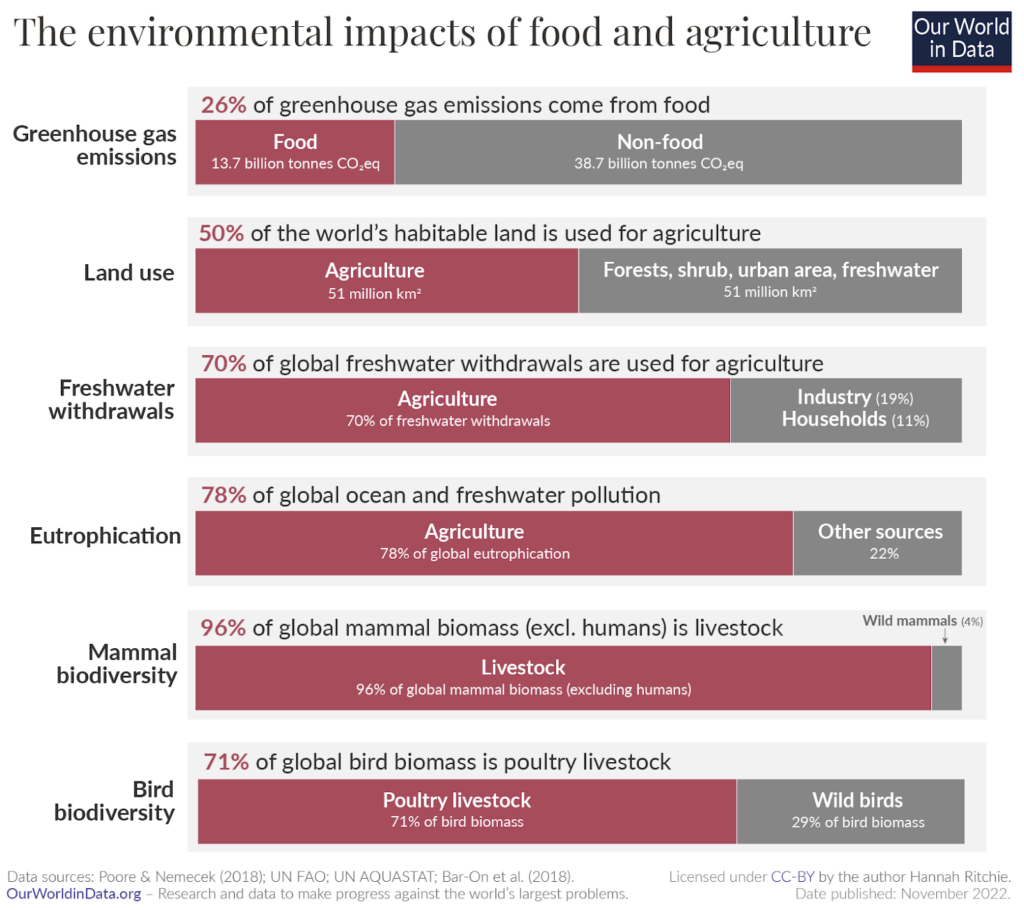
Agriculture alone accounts for over a quarter of global greenhouse gas emissions, while using half of the world’s habitable land and 70% of the global freshwater withdrawals. Agriculture also causes 78% of the global ocean and freshwater pollution.
Livestock accounts for the vast majority of non-human mammal and bird biomass. Mammal livestock outweighs wild mammals by a factor of 15-to-1, and poultry livestock outweighs wild birds by a factor of more than 3-to-1.
These statistics highlight the need for sustainable and responsible practices in food production to reduce its impact on the environment. And the need for us to shift toward more environmentally-friendly foods.
How Can You Reduce Your Environmental Impact and Offset Your Personal Carbon Footprint
There are a few things you can do to mitigate some of the negative environmental effects of consuming pineapples, while still enjoying them. You can also consider offsetting your personal and pineapple-related carbon emissions, which work to remove carbon emissions elsewhere that are then attributed to you. Here, we will walk you through how to accomplish both of these things.
How Can You Reduce Your Environmental Impact When Shopping for Pineapples
In this section, we give you a short list of ways you can reduce the negative environmental effects of pineapples, based on those parts of the life-cycle of pineapples that would otherwise most negatively impact the environment:
- Buy organic pineapples: Pesticides are a major contributor to pineapples’ negative environmental impact. Organic farms, however, don’t use chemicals like pesticides and so their impact on the environment is much smaller in that department. Consequences like groundwater and soil pollution, as well as biodiversity loss can be mitigated by supporting organic pineapple farms.
- Buy local pineapples: Transporting pineapples from Costa Rica has a huge impact on the environment. Fuel emissions contribute significantly to pineapples’ carbon footprint, which affects the environment greatly. Buying pineapples closer to home will help minimize these costs.
- Support sustainable pineapple farming efforts: The pineapple industry has wreaked havoc on the landscape of Costa Rica. However, there are farms that have made commitments to minimize their environmental impact through sustainable farming practices. Supporting these farms can help you to reduce your impact on the environment through the pineapple industry.
- Compost your pineapple waste: Methane and landfill destruction from the pineapple industry are very bad for the environment. You can combat this by making sure that you compost all your pineapple waste. If your city doesn’t have a municipal composting service then you can make one yourself.
Following some of these methods can really help you to cut down on your environmental impact of eating pineapples. None of these will completely eradicate these negative impacts, since there are always effects that may be outside of your control. But some reduction is always better than nothing!
How Can You Offset Your Personal Carbon Footprint
The carbon footprint is a key part of your environmental impact. And it is one of the ways we measure the effects of our human-induced global climate change. Yes, even from eating pineapples!
“Carbon footprint: the amount of greenhouse gasses and specifically carbon dioxide emitted by something (such as a person’s activities or a product’s manufacture and transport) during a given period”
Merriam Webster
Basically, it is the amount of carbon emitted by you as an individual or an organization providing you with goods and services – including pineapples:
- This includes GHG emissions from producing the products that we use and foods that we eat (e.g., power plants, factories or farms, and landfills)
- GHG emissions from fuel that we burn directly or indirectly (e.g., logistics and transportation, cooling or heating facilities),
- as well as the GHG emissions attributed to how we consume these products and foods.
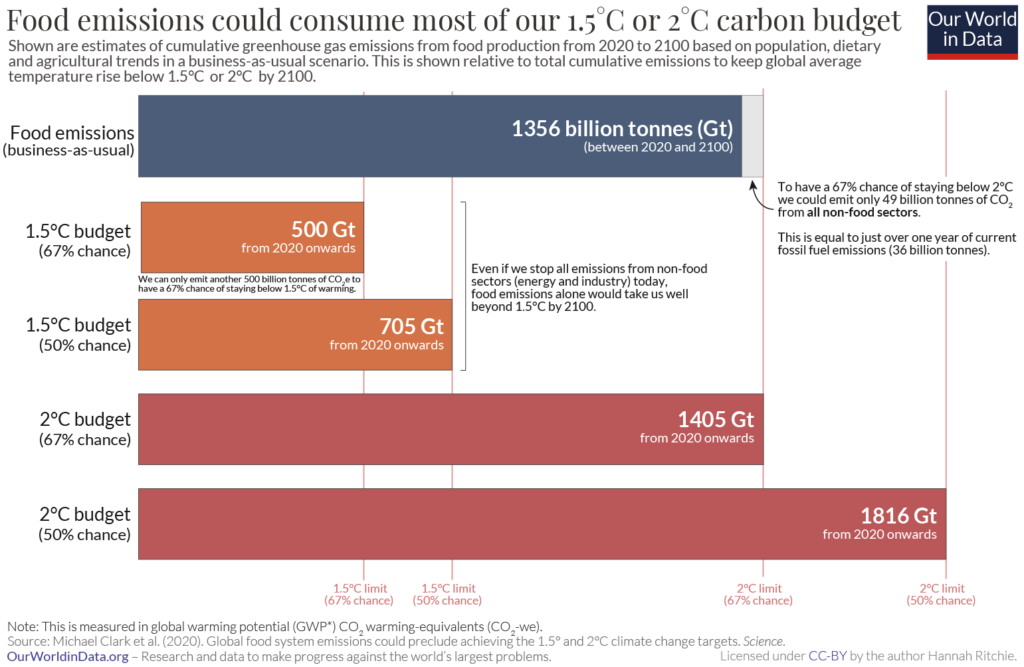
Carbon offsets are reductions in carbon emissions that are used to compensate for carbon emissions occurring elsewhere – for example for the carbon emissions that are associated with pineapples. They are measured in tons of CO2 equivalents and are bought and sold through international brokers, online retailers, and trading platforms on what is known as the global carbon offset market.
“Carbon Offset: a way for a company or person to reduce the level of carbon dioxide for which they are responsible by paying money to a company that works to reduce the total amount produced in the world, for example by planting trees”
Oxford Dictionary
In terms of pineapples – and indeed all food types – there will always be a carbon footprint, because of the resources it takes to get your food from farms to the place where you’ll eventually eat them. And while there are ways to reduce your carbon footprint when shopping for pineapples, carbon offsets would be a way to reduce your CO2e emissions all the way down to net zero (or even to become climate positive).
However, when you purchase carbon offsets, it’s important that they actually make a difference in offsetting (aka reducing) total carbon emissions. To achieve that, the following are key criteria:
- Carbon offset projects have to be effective (different projects have different effectiveness rates)
- Carbon offset projects have to be additional
- Carbon offset projects have to be permanent
- The claims from carbon offset projects have to be verifiable
To find the best carbon offsets for you personally, check out our full guide on the best carbon offsets for individuals, where you’ll also learn more about how these carbon offset projects work, what their respective offsetting costs are, and what your best way would be to offset your own carbon emissions.
Final Thoughts
Pineapples may be one of the less impactful fruits out there in terms of carbon footprint, but they can still cause significant environmental destruction. They have impacted wildlife through deforestation and monoculture farming, waterways through agrochemical use, and the air through nitrogen fertilizers and carbon emissions. However, by taking steps, such as supporting organic pineapple farms and composting your pineapple waste, you can mitigate some of these negative impacts.
Stay impactful,

Sources
- Statistica: Global Pineapple Production by Leading Countries
- Healthline: Benefits of Pineapple
- Southern Kitchen: How Pineapple Became the Ultimate Symbol of Southern Hospitality
- UN Environment Programme: Environmental Impact Assessment and Strategic Environmental Assessment: Towards an Integrated Approach
- Our World in Data: The environmental impacts of food and agriculture
- Our World in Data: Global land use for food production
- World Health Organization: Preventing disease through healthy environments: a global assessment of the burden of disease from environmental risks
- ScienceDirect (Biological Conservation): Worldwide decline of the entomofauna: A review of its drivers
- EPA: The Sources and Solutions: Agriculture
- EPA: Reducing Food Waste and Packaging
- FoodPrint: The Environmental Impact of Food Packaging
- Home Guides: Does a Pineapple Grow Best in Sand, Soil, or Water?
- Impactful Ninja: What is the Carbon Footprint of Pineapples
- Agriculture Review: Pineapple Farming Guide
- Impactful Ninja: What is the Carbon Footprint of Strawberries
- Impactful Ninja: What is the Carbon Footprint of Mangoes
- Bananalink: All About Pineapples
- Down to Earth: Pineapple Agroforestry
- Radio Mondoreal: Advance of Monoculture Plantations in Costa Rica
- EOS: Monoculture Farming
- Study Smarter: Monoculture
- Water Footprint: What is a Water Footprint?
- USDA: The Pineapple Industry in the United States
- Costa Rica: Weather
- The Guardian: The Truth About Pineapple Production
- Naads: Manure and Fertilizers in Pineapple Farming
- Science Direct: Towards Understanding the Impact of Pesticides on Freshwater
- USGS: Pesticides in Groundwater
- GOV.BC: Environmental Protection and Pesticides
- Mitsui: Reducing the Environmental Impact of Chemical Fertilizer
- EPA: Nitrogen Pollution
- Our World in Data: Global greenhouse gas emissions from food production
- Transport Information Service: Pineapples
- EPA: Reducing the Impact of Wasted Food
- GOV.BC: Waste Management
- Biological Diversity: The Plastic Production Problem
- TRVST: The Environmental Impact of Cardboard
- Also Known As: 12 Interesting Facts About Packaging Waste
- National Geographic: Plastic Pollution
- UNEP: Plastic Planet
- One Green Planet: Problematic Pineapples
- Exploring Green: The Sour Side of Pineapple Production
- Our World in Data: The environmental impacts of food and agriculture
- Our World in Data: Emissions from food alone would take us past 1.5°C or 2°C this century
- Impactful Ninja: Why Is a Carbon Footprint Bad for the Environment
- Impactful Ninja: Best Carbon Offsets for Individuals
